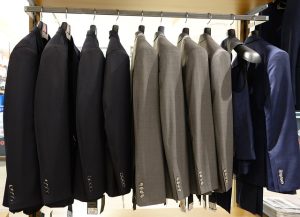Half of US retailers are stuck with excess stock even after the New Year sales, according to a survey by Inventory Planner.
It found that 50% of sellers still have goods they cannot sell after post-Christmas and January discounting – and that is a ‘major concern’ for 46% of brands.
The ‘returns tsunami’ which traditionally hits hardest in January and early February will only make the problem worse.
Last year 27% of US retailers had written off excess stock as a loss.
The average US small retailer is sitting on $48,000 of excess stock – equivalent to 22% of their overall inventory.
The results come from a new poll of 500 US retailers from Inventory Planner, which provides forecasting and planning software for businesses.
They provide a stark warning to retailers about the dangers of being caught with excess stock.
More than half of US retailers (53%) told Inventory Planner there would be ‘dangerous ramifications’ for their business if they failed to sell excess stock.
A similar number (58%) fear they will be left with no choice but to liquidate their superfluous goods.
The survey found that one in six retail brands admitted that they find it practically impossible to know how much stock they will need in coming months.
And more than a quarter (27%) don’t know how to calculate excess stock.
Excess stock is a bigger problem for larger firms than SMEs.
Half of large retailers ($100m-$500m turnover) said they had excess stock, compared to 45% of SMEs ($100,000-£1m).
The problem goes right across all sectors with baby and toddler the worst affected (92% with post-holiday overhang), followed by luxury (55%), homeware/DIY & gardening (50 %) and apparel (44%).
More than half of US retailers (53%) are planning to offer even more discounting to try to shift the unwanted products.
Inventory Planner CMO Sara Arthrell said: “Excess stock is a huge issue for US retailers at this time of year.
“And a tsunami of returns which always comes in January and early February after peak trading is going to make these problems even worse.
“The key to avoiding inventory waste is by forward planning and having rapid response software which allows retailers to pivot quickly to fill order gaps and ditch items early which are not selling.”
Excess stock was a key factor in last year’s collapse of the online furniture retailer, Made.com. Before floating, it operated on a ‘just in time’ model, only buying inventory to fill orders.
But much of the proceeds from the IPO were invested in stock – an excess of which contributed to its downfall.
Arthrell added: “Made.com’s crash was a wake-up call to everyone in retail about the dangers of excess stock.
“Many retailers struggled with product shortages during the pandemic due to understandable supply issues. Now they are faced with the opposite problem – a glut of unsold merchandise which is eating into profits.
“Discounting cripples margins and is not sustainable over the long-term with the cost of living headwinds all retailers are facing.
“That’s where technology comes in. Inventory planning provides accurate replenishment recommendations based on years of purchasing data so you are never under or overbought on inventory.”
Related Articles

Hexnode CEO on how the “Holiday Illusion” is Masking the Risks of Retail’s Seasonal Workforce
The danger of seasonal hires is magnified not just by who is accessing the network, but when they are doing it. Sophisticated threat actors possess a deep understanding of the retail operational calendar.

The New Frugality: How Inflation and Tariffs Are Reshaping Consumer Spending
One of the most telling shifts is how shoppers approach decision-making. Where convenience once dominated, consciousness now plays a larger role. People are researching more before making a purchase, comparing prices across multiple platforms, and questioning whether they really need the product in the first place.

Embracing new concepts vs the return to brick-and-mortar
Balancing the return to physical retail and the development of new technologies to enhance customer experience and drive operational efficiency for long-term success.
Enartis to Acquire Parsec in Winemaking and Retail Deal
The deal will bring Enartis and Parsec together to help wineries manage every part of production more easily and efficiently, from grape to bottle.


 for the latest news and job opportunities in retail tech
for the latest news and job opportunities in retail tech 